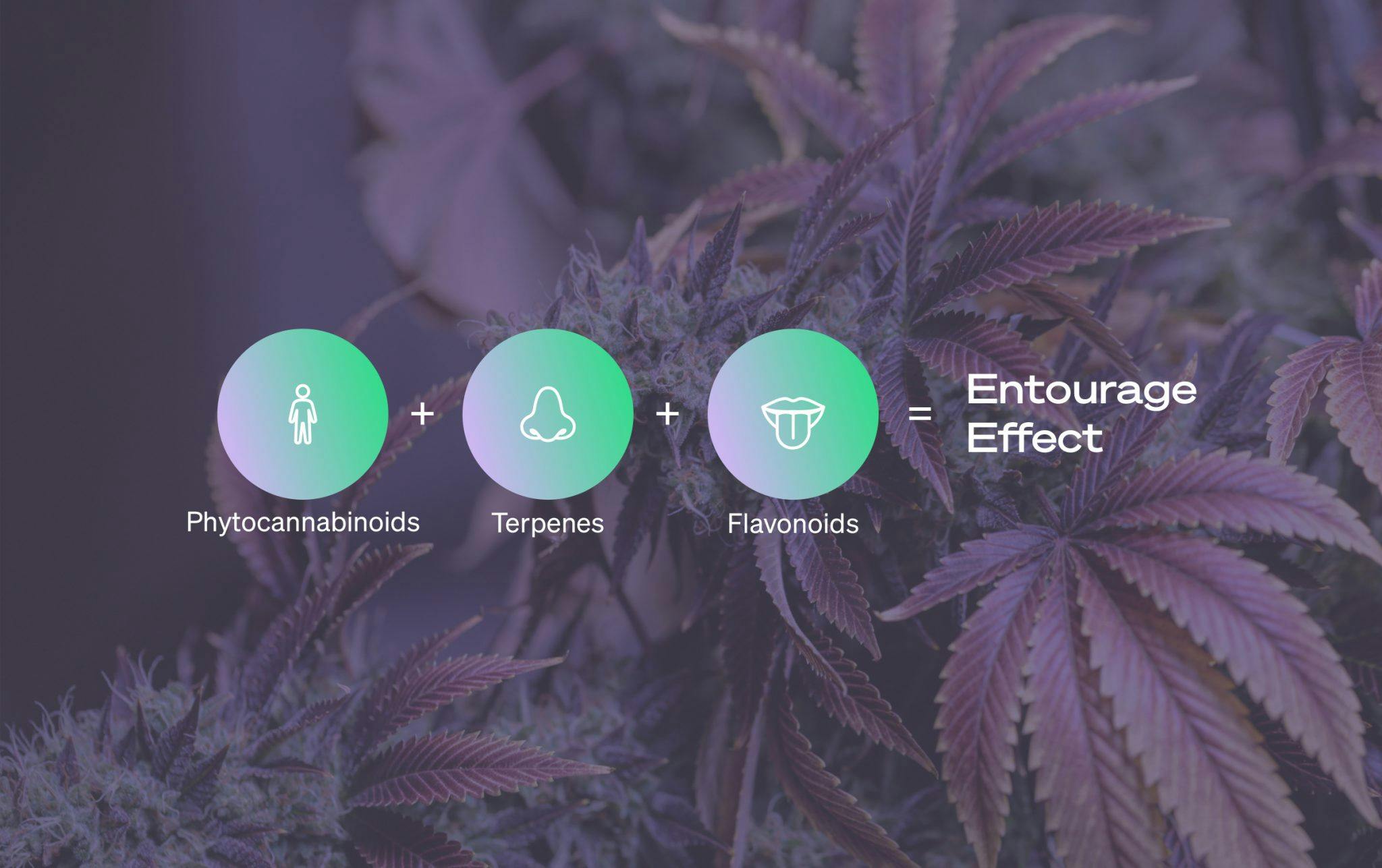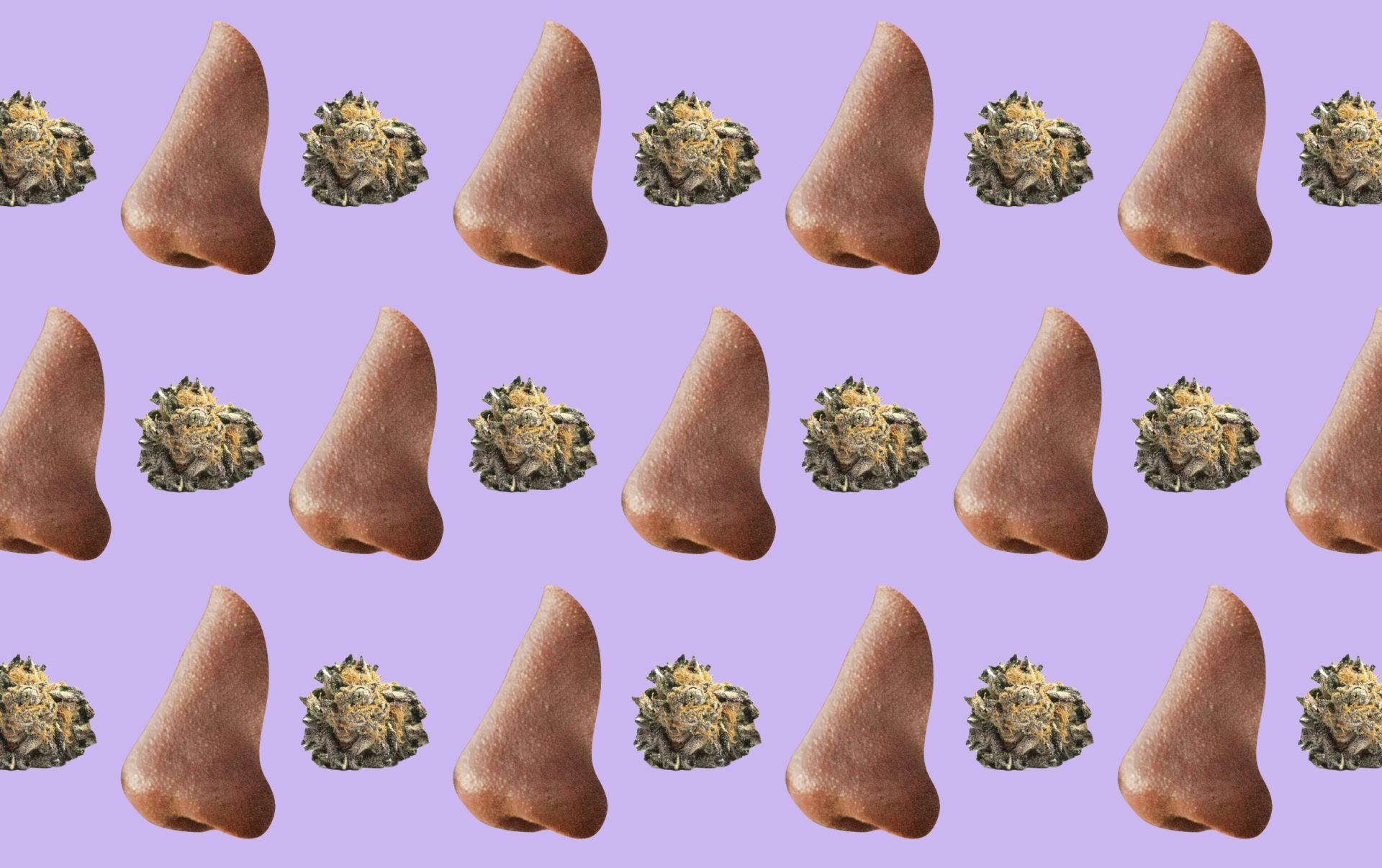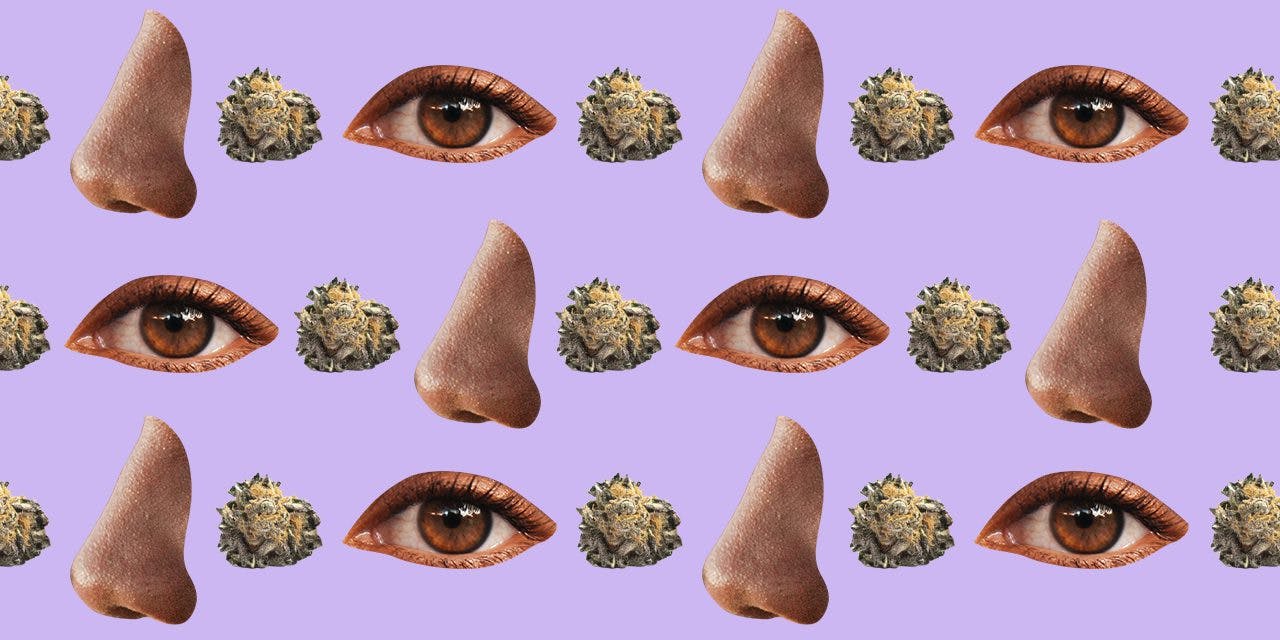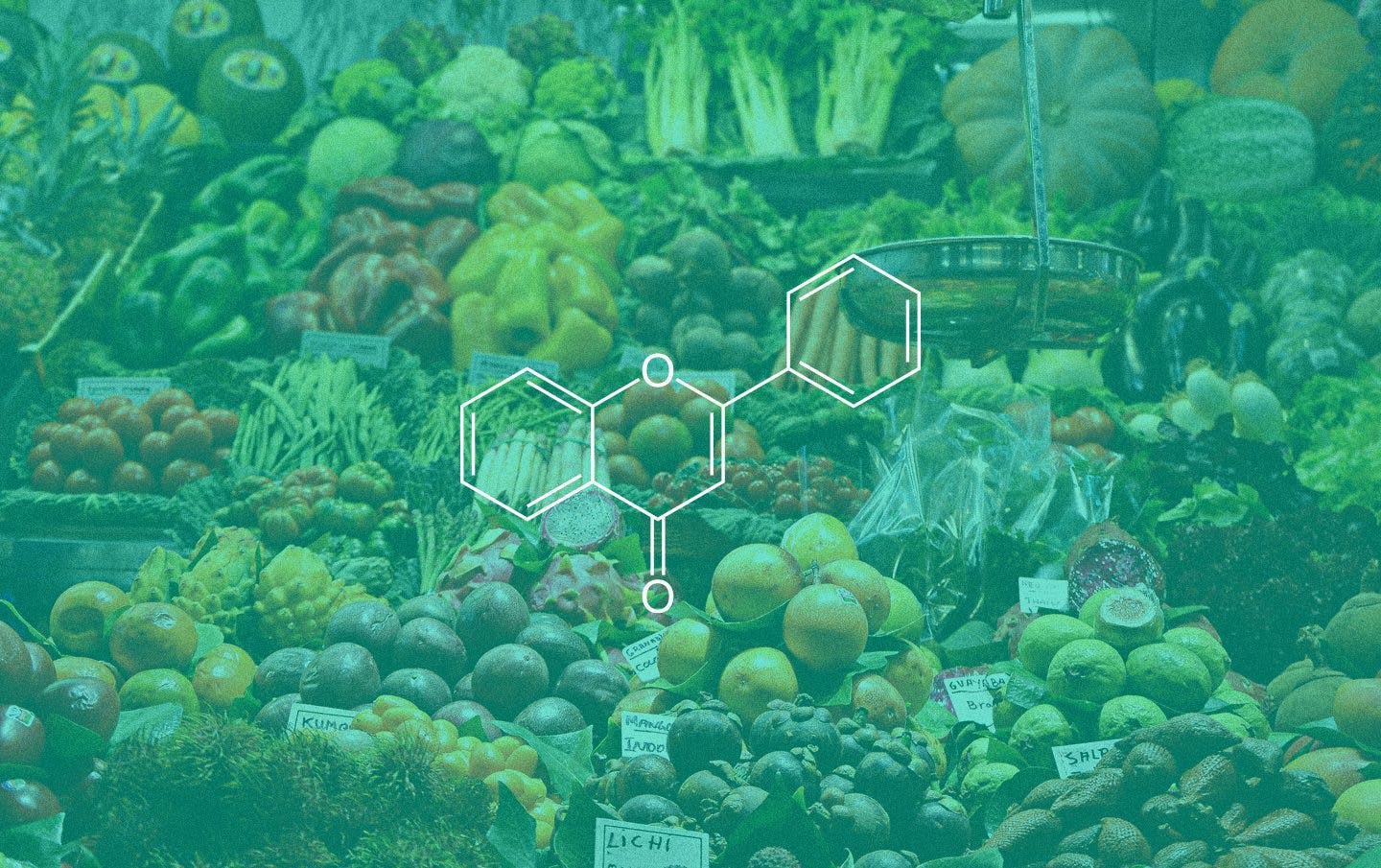What Exactly Is the Entourage Effect?

Article written by

Dipak HemrajHead of Research and Education
Content reviewed by

Dr. Lewis JasseyMedical Director - Pediatric Medicine
The “entourage effect” refers to the mixture of compounds in cannabis that work together synergistically to modulate the plant’s psychoactive effects. Some suggest that the mix of compounds also improves the health benefits of various cannabinoids.
Get your medical marijuana card
Connect with a licensed physician online in minutes.
Which Compounds Are Involved In The Entourage Effect?
There are hundreds if not thousands of compounds in the cannabis plant. Of these, three main groups of compounds contribute towards the entourage effect. These are:
- Phytocannabinoids (plant cannabinoids) — the “feel” or “bodily effect” compounds.
- Terpenes/terpenoids — the aromatic compounds.
- Flavonoids — the flavor compounds.
Cannabinoids, in particular, interact with our body’s endocannabinoid system (ECS).
Download Free Guide to the ECS
Phytocannabinoids
There are up to 150 cannabinoids in the cannabis plant, possibly more. Of these, there are six main cannabinoids. These are:
- Tetrahydrocannabinol (THC). THC is the primary psychoactive component of the cannabis plant. Has sedative, appetite-stimulant, antiemetic (anti-nausea and vomiting), and analgesic (painkilling) effects. It is often the most prominent cannabinoid in the cannabis plant.
- Cannabidiol (CBD). CBD is the non-intoxicating component of cannabis. It is the second most prominent cannabinoid in the cannabis plant, except where the plant has been specifically bred for its CBD content. CBD has anxiolytic (anxiety-reducing), antidepressant, antiseizure, neuroprotective, and anti-inflammatory effects.
- Cannabigerol (CBG). CBG is the “parent” cannabinoid, as CBG is converted to THC and CBD by enzymes in the plant. It is non-psychoactive and may strengthen the function of anandamide – the body’s natural version of THC. CBG may play a role in enhancing pleasure and motivation, regulating appetite and sleep, and alleviating pain. CBG also has significant antibacterial properties.
- Cannabichromene (CBC). CBC is the third most prominent cannabinoid in the cannabis plant, and it has anti-anxiety, antidepressant, pain-reducing, antiviral, tumor-busting, and bone-growth stimulating properties.
- Cannabinol (CBN). CBN is a metabolite of THC, as THC converts to CBN as it ages. Cannabinol is mildly psychoactive, but not in the same way as THC. CBN has sedative, anti-inflammatory, and slightly analgesic properties. Like THC, it can also stimulate the appetite.
- Tetrahydrocannabivarin (THCV). THCV is anti-psychoactive at low doses and psychoactive at higher doses. THCV has appetite-suppressing properties and can help reverse insulin resistance, making it helpful in treating diabetes and aiding weight loss. THCV also has anti-inflammatory effects.
There are also the acidic counterparts to the cannabinoids above (except for CBN), and these also have unique properties (although this is much debated). The most notable acidic cannabinoids are tetrahydrocannabinolic acid (THCA) and cannabidiolic acid (CBDA). Recent studies have shown CBDA to be bioactive, and it is suggested that THCA can work together with CBD to improve its antiseizure effects.
Terpenes
Terpenes give cannabis its unique smell, and they contribute to the flavor of the plant as well. Terpenes also work together with cannabinoids to impart unique effects. The cannabis plant contains up to 220 different terpenes: pinene, limonene, linalool, myrcene, humulene, terpineol, bisabolol, and eucalyptol, trans-nerolidol, and beta-caryophyllene are some of the most common. Beta-caryophyllene – the peppery terpene – is also a cannabinoid as it interacts with the cannabinoid receptor, CB2.
Compounds like linalool (lavender) and myrcene (hops) have relaxing effects that could be useful for treating anxiety disorders. A mixture of pinene and limonene can also be relaxing but also stimulating and could help treat conditions such as attention-deficit hyperactivity disorder (ADHD) and a way to reduce amphetamine intake.
There is some debate on the extent to which terpenes exert their influence on the behavior of cannabinoids and the endocannabinoid system. Some studies suggest that terpenes do not affect cannabinoids and the ECS whatsoever, whereas others suggest that terpenes like myrcene can increase the effects of both THC and CBD. Terpenes can also affect other receptor systems, so it’s essential to look at the whole picture of cannabis’ effects.
Whether terpenes affect the ECS directly or indirectly (or not at all), we cannot say for sure at the moment. However, cannabis is a complex plant that contains hundreds of compounds, many of which are likely to have different uses and purposes.
Flavonoids
Flavonoids contribute to the color, smell, and flavor of the cannabis plant and are hugely important for the reproduction of cannabis – both animals and insects are fascinated by cannabis’s colors! The most prominent flavonoids in cannabis are those that are unique to cannabis and the ones that give the plant its distinctive smell and flavor: cannflavins A, B, and C. These flavonoids have neuroprotective, antioxidant, and anticancer properties.
Free Cannabinoid and Terpene Guide
How the Compounds Work Together
Much still needs to be discovered about how cannabinoids, terpenes, and flavonoids work together (and separately) when in the human body. However, there are two main things that we do know and what you should keep in mind when dosing cannabis:
1. Cannabinoids have different effects at different dosages, which means that cannabinoids have biphasic effects. Low doses of THC, for example, may treat anxiety, but higher doses may prompt it. THCV is anti-psychoactive and appetite-suppressing in low doses but is psychoactive in higher doses. CBD can have energizing effects in low doses but sedative ones in higher doses. CBG is antiemetic in lower doses but may cause nausea in higher doses.
2. Cannabinoids, terpenes, and flavonoids all interact and give different types of cannabis different effects. A combination of CBD, CBG, THCV, and humulene could be great for controlling weight and blood-glucose levels. A combination of low doses of THC, CBD, linalool, and myrcene could be great for treating anxiety.
When it comes to cannabis, we are most often concerned with how the two main cannabinoids, THC and CBD, work together. The answer to this is quite complex, but here’s a simple key:
- Low THC + High CBD = little-to-no psychoactive effects.
- High THC + Low CBD = psychoactive, but low amounts of CBD may dampen THC’s effects and increase the amount of time THC imparts its effects.
- High THC + High CBD = psychoactive and sedative, with CBD increasing the amount of time THC spends in the body.
- Low THC + Low CBD = perhaps an energizing effect, with the CBD potentially enhancing THC’s psychoactivity.
- Equal ratio of THC + CBD = psychoactive, but less so than THC on its own. A potent anti-inflammatory.
Combining THC and CBN may increase the plant’s sedative properties, whereas combining CBD with THCV may lead to a more clear-headed psychoactive effect and help treat obesity and diabetes.
Potential Health Benefits
There may be instances where only a single cannabinoid (isolates) is needed, but in general, cannabinoids work best together and deliver the entourage effect. Pinene and CBD can mitigate some of THC’s adverse effects on short-term memory. A broad spectrum of cannabinoids is also ideal for treating cancer, as they work synergistically to boost their antitumor properties. Combining cannabinoids and terpenoids can also improve their usefulness as anti-inflammatories and painkillers.
Tips for Getting the Most From the Entourage Effect
The best way to get the most from the entourage effect is to use cannabis products that contain a wide range of cannabinoids and terpenes. Full-spectrum cannabis oils and tinctures could be ideal, and cannabis varietals (or “strains”) in their raw state (i.e., flower) often have distinctive cannabinoid and terpene profiles that can be utilized in a wide variety of ways (e.g., making your own canna oil).
Other tips include:
- Eating your cannabis medication alongside a meal containing plenty of healthy fats increase absorption rate.
- Utilizing a wide range of consumption methods, including tinctures & full-spectrum oils, vaping, topicals, and edibles.
- Maintaining a healthy diet and exercise, as these are natural ways to boost your body’s cannabinoid production.
Get Your Medical Card
Connect with a licensed physician online in minutes.
Frequently Asked Questions
What does the entourage effect feel like?
This depends entirely on which combination of cannabinoids and terpenes you are using and at what dosage. THC on its own can produce a psychoactive effect, whereas a combination of THC and CBD can dampen THC’s psychoactivity while elongating the amount of time THC imparts its effects. Low doses of THC combined with low doses of CBD (and other cannabinoids and terpenes) may increase THC’s psychoactive effects while mitigating some of its adverse effects.
All in all, a mixture of cannabinoids is usually more tolerable than THC alone. Products containing little-to-no THC will not be psychoactive or only slightly psychoactive.
Which cannabis products give the entourage effect?
Full-spectrum cannabis products, including tinctures, flower, and topicals, can all give the entourage effect. Cannabis products (often tinctures) that contain no THC but the other cannabinoids and terpenes are often referred to as “broad spectrum” products. These will also have an entourage effect, although many people will benefit from the addition of some THC as well, even if it’s just low doses.
Do other plants have an entourage effect?
Yes! The entourage effect doesn’t apply only to cannabis. Other plants, roots, and fungi commonly used for medical purposes also contain several active compounds that can work together (and against) each other. One good example of this is turmeric, which has the anti-inflammatory compound curcumin. Combining curcumin with the terpene piperine (found in black pepper) enhances the serum concentration, extent of absorption, and bioavailability of curcumin.
Is the entourage effect proven?
Several studies show that a combination of cannabinoids and terpenes can increase cannabis’ antitumor, painkilling and anxiety-beating effects. However, more studies are needed, and a recent review of current scientific literature found that many studies reported no entourage effect or mixed results (with some negative effects as well). Whatever the answer, one thing is true: cannabis is a complex plant with hundreds of compounds, many of which have different effects. To quote Dr. Ethan Russo:
“The current wave of excitement in Cannabis commerce has translated into a flurry of research on alternative sources, particularly yeasts, and complex systems for laboratory production have emerged, but these presuppose that single compounds are a desirable goal. Rather, the case for Cannabis synergy via the “entourage effect” is currently sufficiently strong as to suggest that one molecule is unlikely to match the therapeutic and even industrial potential of Cannabis itself as a phytochemical factory.”
Therefore, the idea that cannabis is a pharmacy in a plant is not necessarily debunked at all — only that more research is needed.



